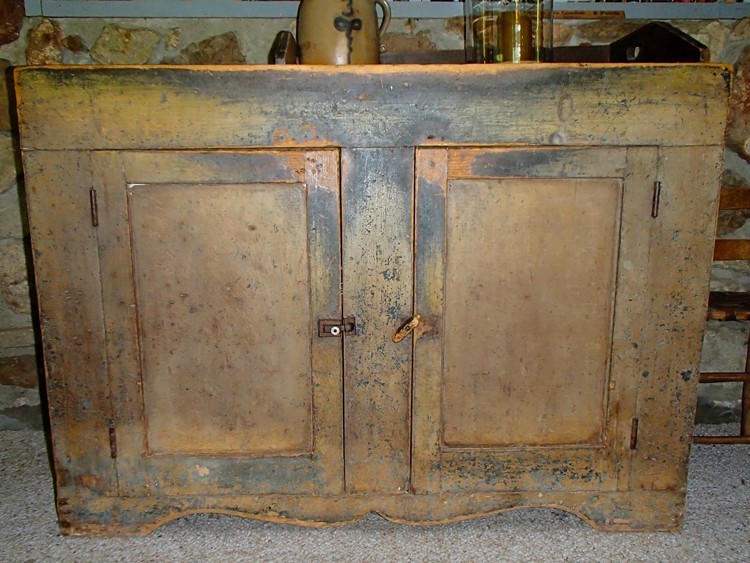Our antique furniture has a story to tell. Are you open to “listening” to their stories? All you have to do is study the clues and you’ll know some of what they’ve been through.
For example, I own an early dry sink in its original finish. The years of wear are evident around the toggle latches. These marks, and others, were made by fingers as they brushed the paint when the doors were opened and closed. Even now, I’m adding to its story as I use it.
Another early antique I own is a colonial era settle. A settle is a high backed bench with stout arms, It was used in front of a fireplace to hold the heat around the person sitting on it. When it wasn’t in front of the heat, the settle was dragged back to facilitate cooking and to allow the heat to warm a larger area. There’s a burn mark on it where a candlestick was likely hung and scorched the wood. Was someone reading and fell asleep? We can’t know the whole story but it’s fun to speculate.
How do you figure out your furniture’s stories? Look for knife marks in places where food was prepared. Notice rounded corners from constant nudging. Chairs will often have legs that were worn from dragging or from someone tipping back in them. Wood might show water marks where a wash basin sat. Some surfaces might have black stains where ink was dribbled. Every mark is a clue to the story your furniture is telling you.
If you’re wondering if a framed painting or photo is an original, it can tell you. Look carefully at the photo or the painting and how it was framed. See if it “fits” the frame. If there are areas covered behind the opening of the frame, it’s likely not original and has been reframed. If the framed subject is too small for the frame and shows areas that should be concealed, it’s also a red flag.
To be sure, turn the frame over and study what the backing has to say. Most good framing includes a paper dust sheet that seals the back of the frame. If the covering has been torn, look carefully at the backing board that’s exposed. Is there a solid wooden board that’s holding the photo or painting in place? Do the tiny nails look old? Are there signs that other nails were once there and are now missing? Are the nails too shiny? Look at the picture hanger. Is it an old looking wire or has a new sawtooth hanger been applied?
Unless you see telltale signs of new tacks or a new backing board that indicates that this framed item has been taken apart, I don’t recommend removing the backing. It’s often more valuable if it isn’t disturbed. But, if you strongly suspect that it has been reframed, carefully remove the nails, backing and hanger to see what’s inside the frame. Maybe the original painting was left in place when the new item was framed. We’ve all heard the stories of rare paintings found behind cheap prints. I hope that’s what you find, too!
Go take a close look at your antiques and let them tell you their story. Be a good detective and look at the entire piece. The backside of pieces might be the best storyteller of all. Look inside and at the bottom of your pieces.
Be honest and look at your antiques as if you’re a skeptic. Remember the old adage: if it looks too good to be true, it probably is!

Nancy Russell is a native of Boone County and opened an antique and refinishing shop near her home in 1971. She operated Boone’s Lick Trail Antiques for 20 years, added two antiquing friends as a partners and changed the name of the shop to Friends Together Antiques. Nancy retired seven years ago after 40 years in the business.


